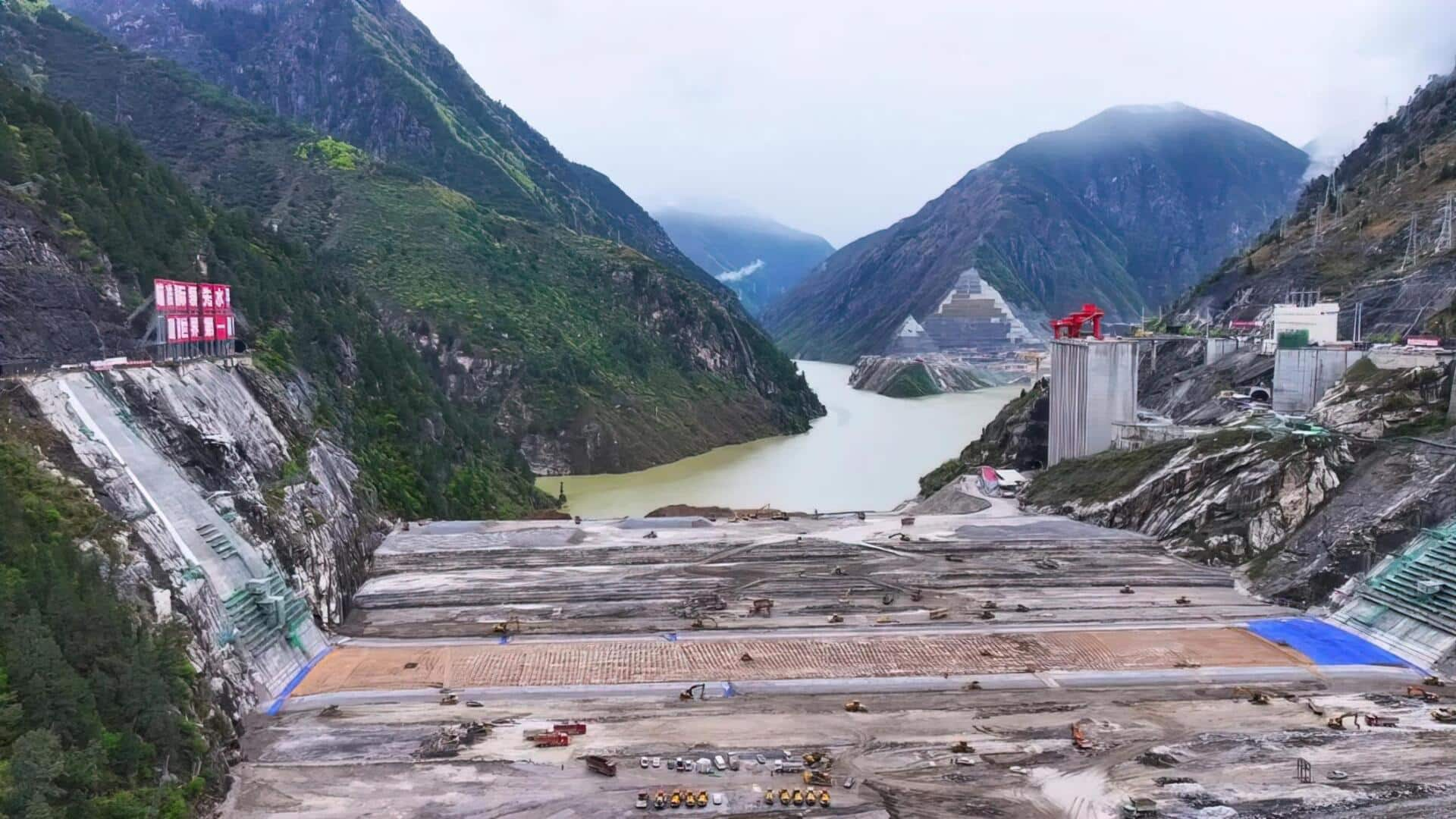
China nears completion of world's tallest dam, water storage begins
What's the story
China is nearing completion of the world's tallest dam, the Shuangjiangkou hydropower project in Sichuan province. The project started water storage on May 1, taking a major step toward becoming operational, as reported by South China Morning Post. Standing at a staggering height of 315 meters and with a storage capacity of 110 million cubic meters, the dam will produce an annual electricity output of 2,000MW.
Design and construction
Shuangjiangkou dam: A marvel of engineering
The Shuangjiangkou dam, a $4.9 billion project, has been under construction for almost a decade. It is situated in the Aba Tibetan and Qiang autonomous prefecture of Sichuan province. The dam emerges from the upper section of the Dadu River, which flows from Tibet toward the Sichuan Basin. It is as tall as a 100-story skyscraper and 10 meters taller than the Jinping-I dam (also in Sichuan).
Operational plans
Power generation and environmental benefits
China's Power Construction Corporation (PowerChina), the developer of Shuangjiangkou, has said that the project is on track for commissioning. The first unit is expected to start generating electricity by the end of 2025. Once operational, this dam will produce over seven billion kWh annually, enough to power three million homes. The renewable energy generated here will offset annual coal consumption by 2.96 million tons and reduce carbon dioxide emissions by approximately 7.18 million tons.
Technical hurdles
Overcoming engineering challenges with innovative solutions
The construction of Shuangjiangkou was no easy feat, given the high-altitude location (over 2,400 metres above sea level) and complex geological terrain. The engineering challenges included seismic resistance, controlling seepage and drainage, and constructing the dam's core structure. To tackle these, engineers have used advanced solutions like robotics and 5G-enabled systems. Robotic rollers with sensors collect real-time data to optimize construction performance while drones monitor potential environmental risks around the site.